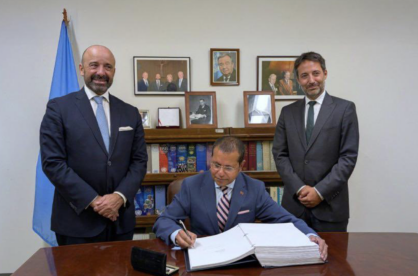Youth, from the margins to the centre
For our youth to thrive, we need to do better.

Source: UNICEF
For our youth to thrive, we need to do better.

Source: UNICEF
Where are you from? As a Maldivian the answer can range from Dhuvaafaru, Goidhoo, Lhohi, Malé, Maamigili, Vashafaru or to any of the other 187 inhabited islands dispersed across the Indian ocean. In a nation like the Maldives, the answer to this simple question is more significant than one would imagine, as it can define one’s life experiences, opportunities, and choices.
Years of centralised development has resulted in wide regional disparity such that a few urbanised cities, like the central Malé, is far ahead on the development ladder, while many of the rural islands struggle and lag behind. For instance, in terms of those with a lower income, 91.1 percent live in the Atolls while only 8.8 percent are found in Malé.
As per the 2019 Human Development Report, the Maldives ranks 104 out of 189 countries on the Human Development Index (HDI) with a HDI value of 0.719, placing it in the high human development category.
However, when adjusted for inequality, the value falls by approximately 20 percent indicating that the benefits of the nation’s economic growth and development is not equally enjoyed by all.
While the prevalence of such inequality is felt by all, it has a disproportionate effect on certain demographics such as youth, who make up to 47 percent of the nation’s population. The resulting effect on youth acts as a barrier to the progressive and equitable realisation of their full potential as they struggle in the face of inadequate opportunities and choices.
Many youth in the Maldives continue to live on the margins of a society that offers them little.
In the islands, the choices are scarce and the quality and variety of education are limited, which in turn narrows down employment opportunities down the road. The source for most jobs in the islands is the government, which too often are handed out based on connections, networks, and political affiliation rather than merit. As a result, young people are forced to leave the comfort of their homes and migrate to urban cities or resorts in the hopes of better opportunities. The search continues into the overcrowded streets of Malé where they are met with more and more youth in the same boat, looking for suitable employment opportunities.
According to the HIES 2016, the youth unemployment rate stands at eight percent with young individuals aged 18-35 years accounting for approximately 70 percent of the total unemployed population. Further, 17 percent of young men and 39 percent of young women are neither in school nor employed.
Many of these young individuals, cite inability to find a suitable employment opportunity that match their education amongst the top reasons for unemployment. Education and employment opportunities are highly skewed such that available educational opportunities do not compliment the needs of the labour market, resulting in significant imbalance in labor demand and supply.
While higher education opportunities have improved considerably over the past years, the selection of courses are limited. This is even more apparent in the outer islands where the dearth starts even earlier, with secondary education offering a narrow assortment of streams. The luxury to dream of a unique career are limited to a privileged few while many young individuals are forced to let go of their aspirations and make life decisions based on the options available. This leaves them competing with a large number of others with a similar skill set and background. For these reasons, we see that increased educational attainment does not translate to better employment rates, instead it is hindered by the higher majority of low skilled jobs that characterises the Maldivian labour market.
With more and more youth pursuing higher education, they expect better jobs of higher levels and pay. Their educational qualifications surpass the requirements of most entry level jobs that make up the majority of the jobs in the Maldives.
However, when it comes to managerial jobs, they fall short in vocational and technical skills resulting in greater reliance on foreign labour. Faced with no real choices and opportunities that can enhance one’s personal development, the youth continue to feel increasingly stressed, helpless, and disengaged.
Over the years, ample speeches have emphasised the significance of harnessing the potential of young individuals for the betterment of the whole of society. It is time we begin translating these words into action.
The Maldives' youth is full of potential, and they are sure to share it with the world given the opportunity. Sadly, it is such chances and spaces that are lacking; but it does not have to be that way. We need to do better.
We need to find innovative ways to tap into the talent and ideas that is presently lost in the margins. We need to move away from the factory model of education and make schools and colleges a safe space designed to nurture, promote, and celebrate individuals’ talents and abilities. Curriculums need to be revised to promote vocational and entrepreneurial skills which prepare young individuals to face the challenges of the labour market and society. We need to diversify educational offerings to better compliment the needs of the labour market coupled with more career guidance and apprentice programmes.
We also need to find the means to foster an inclusive labour market that benefits all rather than the select few. We need to move away from a culture that is centered around exploitation and move towards one that puts the well-being of the worker at the center. We need labour rules and regulations that protect the rights of the workers. We need transformative approaches that promote flexibility, adaptability, and inclusivity.
We need to do better.



